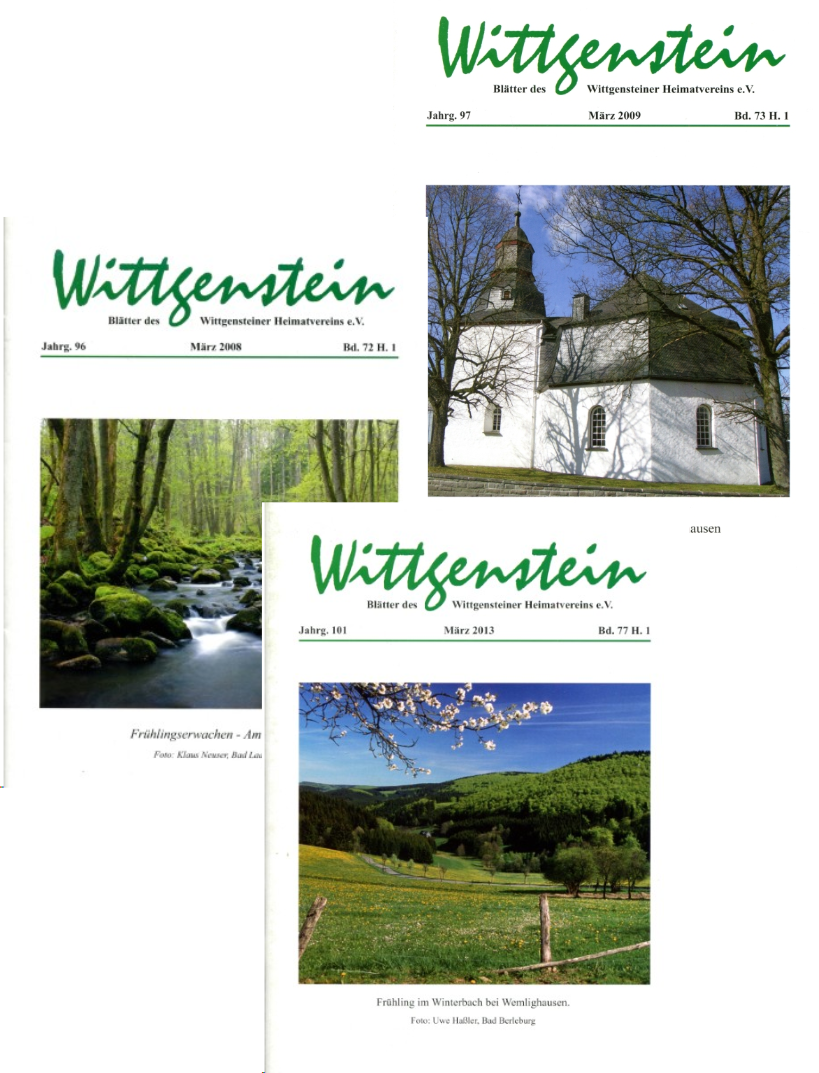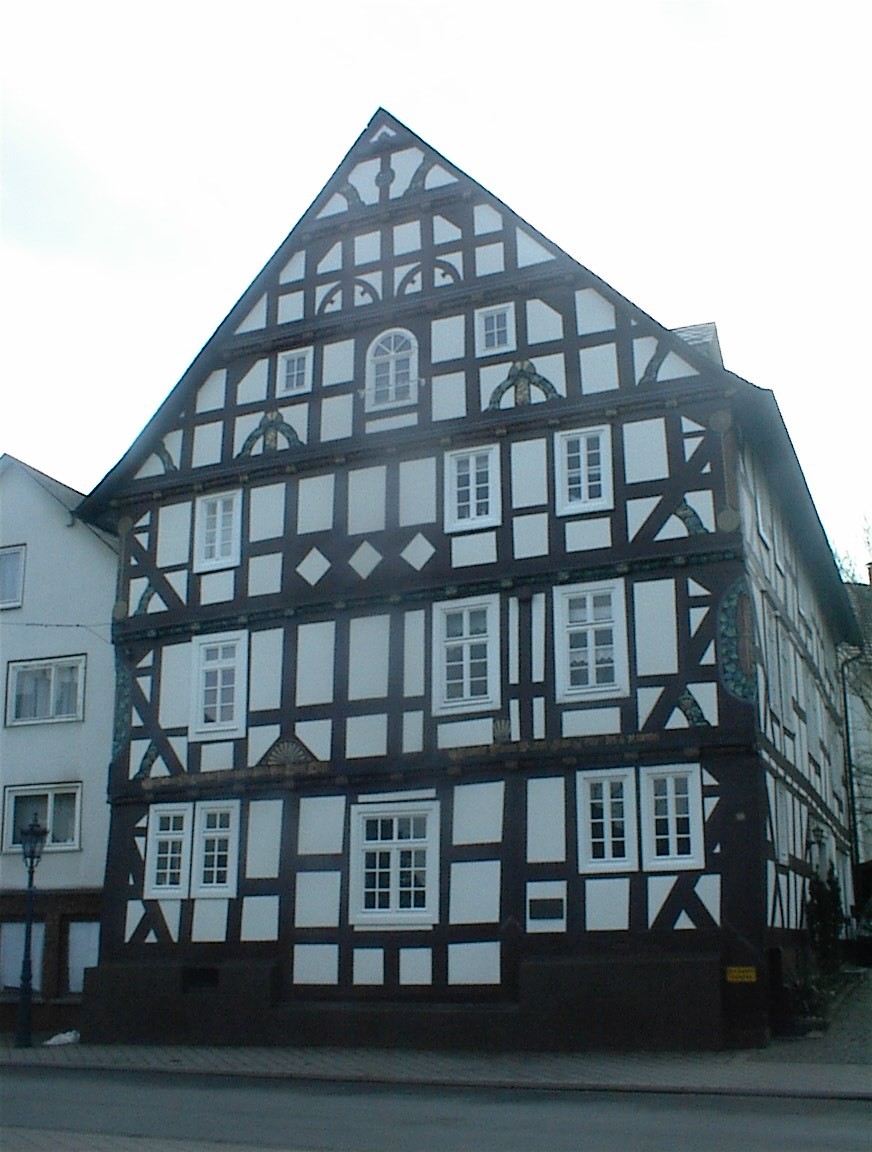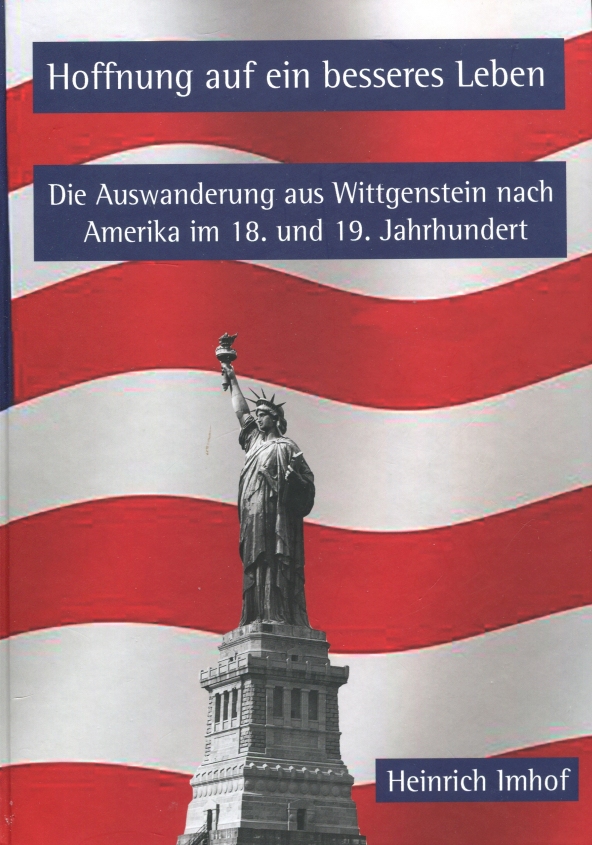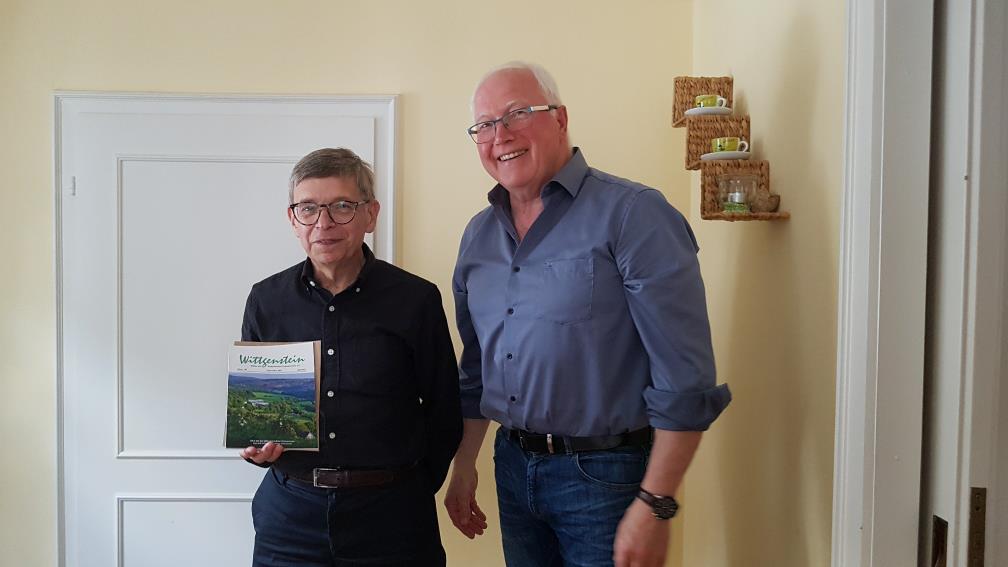



Dear friends of local history,
do you have special knowledge about the former county of Wittgenstein? Do you hold historical treasures, exciting anecdotes, well-founded research results, or interesting observations on the natural history of our region? Then we cordially invite you to share your expertise with a broad readership!
Wittgenstein – Blätter des Wittgensteiner Heimatvereins (magazine of the Wittgenstein Heritage Society) has been the central forum for regional history, regional studies, and natural history of our region for decades. We are constantly looking for committed authors to enrich our journal with their contributions.
We welcome manuscripts among others on topics such as:
Send your manuscript to the journal's editorial team. We are happy to answer any questions you may have about the scope, formatting, and topics.
Contact the editorial team: schriftleitung@wittgensteiner-heimatverein.de
We look forward to publishing your stories about Wittgenstein!

Table of content magazine 1 / 2025 |
|
Johannes Burkardt |
Behördenzeichen: Ausdruck lokaler Identität – Stein des Anstoßes. |
Bernd Homrighausen |
Am Kreuz – Ein steinernes Wegekreuz auf dem Wunderthäuser Sohl? |
Wolfram Martin |
Unscheinbarer Falter – attraktive Raupe: der Buchen-Streckfuß. |
Dieter Bald |
Tragische Rückfahrt vor 100 Jahren – Der Tod des Fürsten Richard |
Marianne Seelbach |
In der Breidenbach. |
Wolfram Martin |
Die Feldlerche in Wittgenstein |
Paul Riedesel |
Familien und Fruchtbarkeit im früheren Wittgenstein. |
Holger Weber |
Museum neu interpretiert: Vom Papier zum digitalen Archiv |
|
Vereinsnachrichten |









Relatively little is known about the life of the renowned builder, Hermann (Mannus) Riedesel. He was born in 1662 in the house known as “Herjes” in the hamlet of Melbach in Wittgenstein. His baptismal record gives his name as “Johann Mannus”, but it was customary to be known by one’s middle name, and Mannus is understood as a nickname for Hermann. He was married twice and had five known children. Riedesel died in 1726 and is buried in the churchyard at Raumland, though gravestones were not used in those days.
How he learned his craft as a carpenter and builder, or where he might have apprenticed is simply not known. There was no guild system in Wittgenstein, and skilled builders were usually brought in from the outside. It appears that he learned a great deal more during his training than basic carpentry. The carved figures and other decorations which feature in his work are something of a mystery yet today. How many projects he worked on is unknown and many are probably lost to time. Only a dozen or so are known to us today. His most impressive structures in Wittgenstein were built between 1691-1726, including the following:
Known literature about „Mannus Riedesel” here.

The emigration from Wittgenstein to America in the 18th and 19th century
by Mr. Heinrich Imhof
560 pages and more than 5400 emigrants
Price 38,- Euro (plus shipping if necessary)
For further information please contact the author Mr. H. Imhof
E-Mail: H.Imhof@gmx.de
Table of contents


